Climate action
Climate change is a major threat to humanity. While air travel currently represents less than 3 per cent of global emissions, we recognise our duty to minimise our impacts and drive the industry towards carbon-neutral growth.
What is Sustainable Aviation Fuel?
Sustainable Aviation Fuel (SAF) is a cleaner alternative to fossil jet fuel that is produced from sustainable and renewable sources – such as agricultural residue, waste oils, municipal solid waste, industrial waste gases, or other non-fossil carbon sources – it has the potential to reduce lifecycle carbon emissions by over 80 per cent, based on the total carbon output created from every stage of production, distribution and usage.
SAF is the most important lever for decarbonising airline operations over the next few decades, before alternatively powered aircraft can be widely deployed in commercial operations.
How SAF works
Collection
Municipal waste is collected.
Segregation
Materials are recycled. Suitable waste for jet fuel is consolidated.
Conversion
Waste is converted into jet fuel through a thermochemical process.
Delivery
Fuel is blended, tested and delivered to the airport.
80% lifecycle reduction
Lowered greenhouse gas emissions make SAF a greener fuel source.
We’ve introduced our voluntary SAF programme, allowing our passengers to make SAF contributions by purchasing SAF attributes. Our carbon calculator estimates the carbon emissions for your specific flight and allows you to make monetary contributions to support the scale-up of SAF adoption and fund SAF purchases that potentially help reduce the reliance on fossil fuel over time. Find out more here .
We have also launched Asia’s first major corporate SAF programme which helps accelerate the global transition to SAF whilst providing corporate customers the opportunity to reduce their carbon footprint from business travel or airfreight by contributing to the use of SAF.
We are a founding member of the Aviation Climate Taskforce , a non-profit organisation created to accelerate the development of breakthrough technologies in decarbonising air travel.

Fleet renewal and tech upgrades
We constantly review the performance of our fleet and invest in new fuel-efficient aircraft, modern technology and continuous operational improvements.
Our new and upcoming aircraft include:
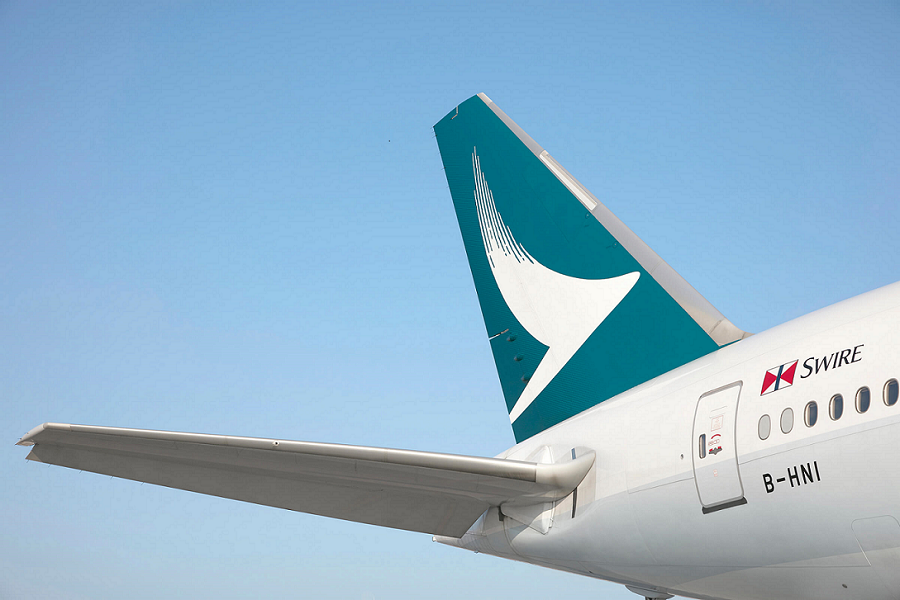
21 x Boeing 777-9
Up to 21% improved fuel efficiency.
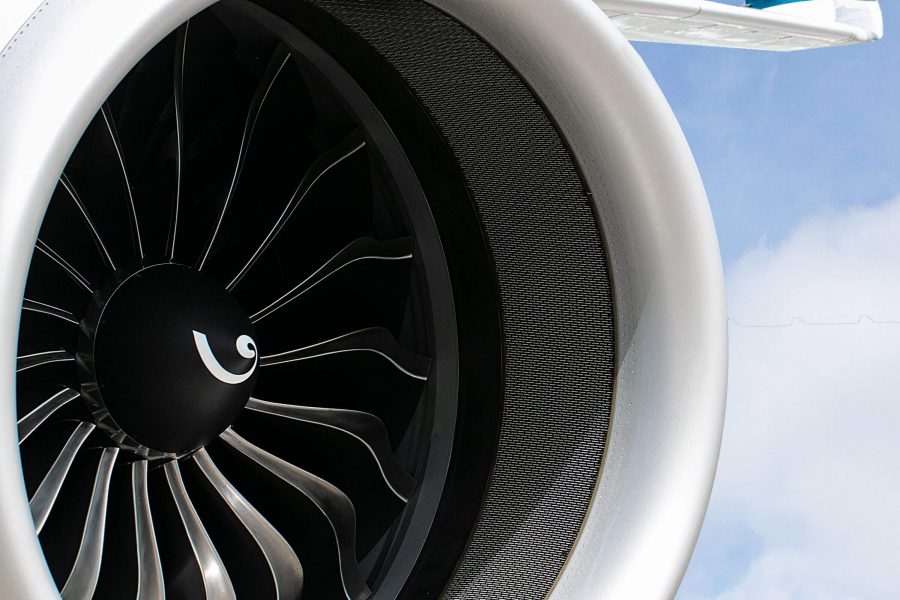
48 x A320neo/A321neo
20% more fuel-efficient.
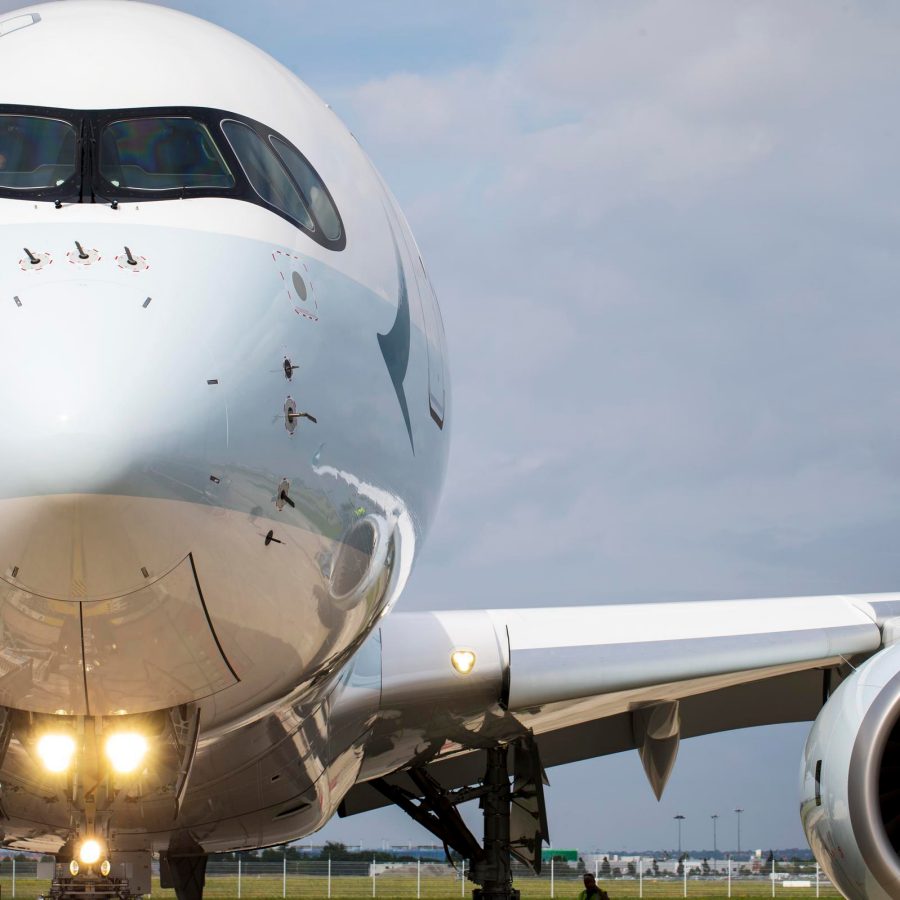
30 x A330-900
Lighter, aerodynamic design and 25% more fuel-efficient.
We are also committed to cutting back on emissions with newer, smarter technology.
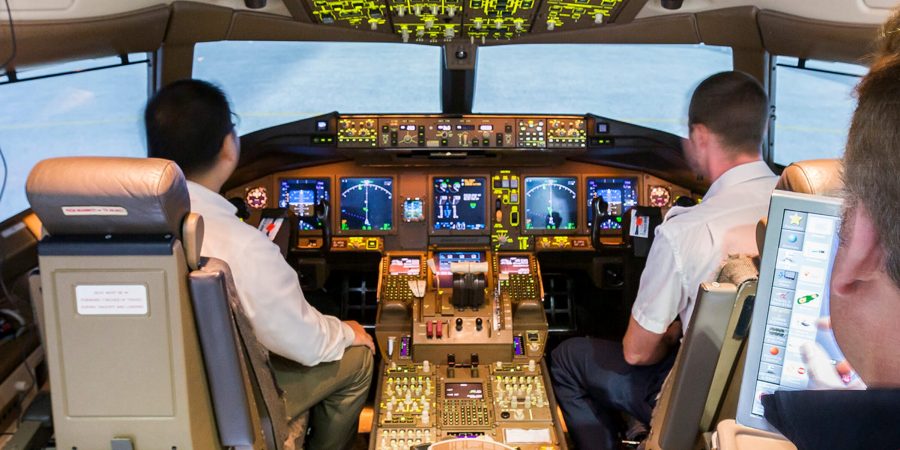
Paperless cockpits
Smart tablets have replaced paper manuals on all flights, saving 1 million litres of fuel, 13,400 tonnes of paper and 4,000 tonnes of carbon emissions per year based on our 2019 flight level.

Renewable energy

Slashing ground emissions
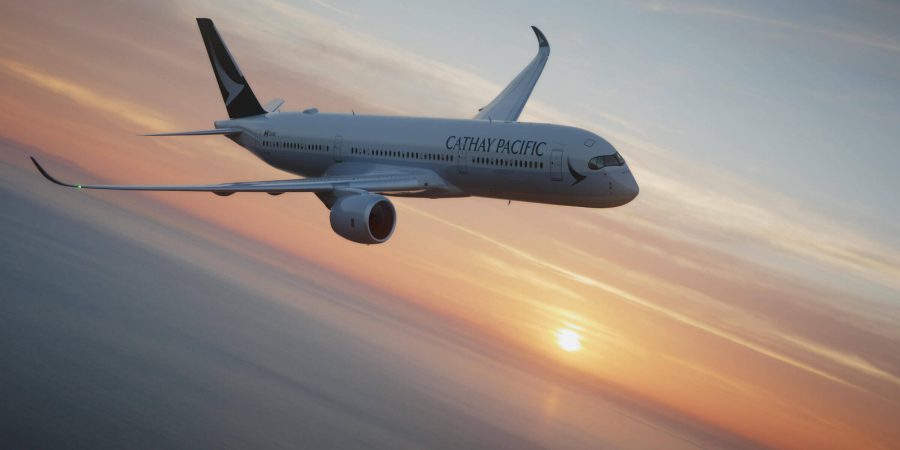
Scope 3 carbon emissions mapping
In 2022, we mapped all of the scope 3 indirect carbon emissions created by our airlines and ground operations in Hong Kong. It’s given us clear focus areas to prioritise for reduction.
Discover our cargo carbon offset solution
We have extended Fly Greener to our cargo operations since 2022. This latest extension allows our cargo customers to accurately audit and offset emissions from their shipments through Cathay Cargo’s digital booking solution, Click & Ship , in a one-click process.
Click to offset your shipment emissions.
News and case studies
- China – the Chinese Mainland, Hong Kong SAR, Macao SAR and Taiwan Region
- Hong Kong SAR - English
- Chinese Mainland (China) - English
- Taiwan, China - English
- 香港特別行政區 - 繁體中文
- 中国內地 - 简体中文
- 中國台灣 - 繁體中文
- Africa
- South Africa - English
- Asia
- Bangladesh - English
- Korea - English
- Singapore - English
- Cambodia - English
- 한국 - 한국어
- Sri Lanka - English
- India - English
- Malaysia - English
- Thailand - English
- Indonesia - English
- Maldives - English
- ประเทศไทย - ภาษาไทย
- Indonesia - Bahasa Indonesia
- Myanmar - English
- Vietnam - English
- Japan - English
- Nepal - English
- Việt Nam - tiếng Việt
- 日本 - 日本語
- Philippines - English
- Australasia
- Australia - English
- New Zealand - English